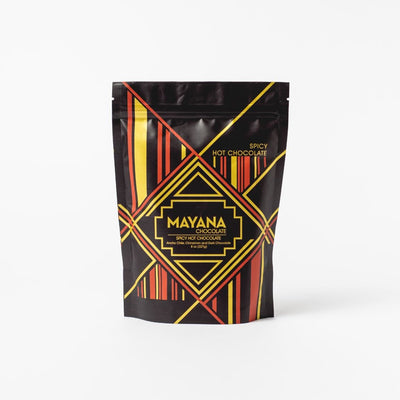A Culinary Creator’s Uphill Battle
Food is ubiquitous in our lives and while it serves the essential function of giving us energy, it also provides enrichment, pleasure, and fuels our social lives. We don’t just need food, we want food. We want to experience new flavors, use new ingredients, learn to cook differently, and expand the variety of food in our lives.
Fortunately there is an equal, if not greater, desire by many of us to share with others what we know about food and our culinary traditions. Whether it’s to share our cultures, invite others to taste what we know is amazing, enable people to lead healthier lives, or share knowledge, there is no shortage of passion and creativity to continue to enrich our collective culinary experience.
Yet even with desire, it remains difficult for many to become culinary entrepreneurs outside of immediate social networks, for new foods & beverages to be discovered by those who may love them most, and to scale in a way where product integrity and authenticity is maintained. This set of challenges is what drives us at Here Here Market and we want to make it easier for these creators to flourish. Let’s dive into the obstacles many face.
The Mass Production Economy
In food & beverage, we still live in an economy where mass production wins along all areas of the value chain. From big agriculture to mass manufacturers it can feel nearly impossible for a new or small creator to get a foothold in the market.
- Large Company Control: A handful of large companies control the majority market share of almost 80% of dozens of grocery items bought regularly by Americans. We recommended checking out this analysis by The Guardian to see how pervasive this is!
- Big Agriculture Domination: It’s likely these companies source ingredients from just a few large industrial agriculture players. The agriculture industry has one of the HIGHEST corporate concentration ratios among US industries at 60-80% for many of its sectors. This means that 4 large companies control 60-80% of the market for many key crops.
- Retail Challenges: Even bright spots like Whole Foods Market’s local purchasing program have a long way to go. In 2020, Whole Foods touted the introduction of over 950 local brands into their stores. Yet, this remains a small portion of the 34,000 SKUs an average store carries and many of these brands are limited to just a few store locations.
Marketing
So what’s a new creator to do?! Among the 15,000 new food products that are introduced each year, historically only about 10 percent have been successful. Luckily the internet is now a thing and thanks to digital and logistical innovations, culinary entrepreneurs have the option to bypass this mass market situation and sell directly to buyers. With this comes its own set of challenges to navigate.
- Buyer Attention: A new product and brand needs to get buyer attention is a noisy world! There are more that 20 million e-comm sites in the world and social media channels are active with billions of people vying for attention (e.g. Instagram has over 1.4 Billion Users)
- Digital Communication: Creators need to communicate with buyers, tell their story, and share their product(s) in quick, impactful ways. People spend an average of 45 seconds on a web page, which means clear communication is key!
- Limited In-Person Opportunities: And what about in person opportunities? Hopefully a creator can reach a large enough scale to obtain a local maker slot at Whole Foods, but until they do Farmers Markets and other local markets which provide good entry points for brand exposure. The challenge is that this exposure can be limited to a few hours, one day a week, during only a few weather appropriate months in many regions.
Production & Distribution
Alright, let’s say the creator has figured out how to find a place in our mass production economy and is doing a stellar job with brand awareness and reaching buyers. All set to go? Well.. not quite as she needs to make her product and get it to buyers….fresh and in a timely manner so they keep coming back for more!
Production
- Production Facility: To sell in the United States, our creator has to navigate state laws for food production and either get set up in a commercial production facility or adhere to cottage food laws
- Quality & Packaging: She has to make sure her product can be made consistently and is packaged to travel and minimize any spoilage. This includes ensuring her recipe produces consistent quality, she can source required ingredients, and identifying appropriate packaging (bottle, jar, box, etc.).
- Regulations: She needs to understand and meet food regulatory requirements. These include ingredient, allergen, and nutrition label requirements as well as any food safety testing (among others)
Distribution
- Retail Distribution: Lastly, our creator needs to get their product to you! If they’ve been able to get into a retail or grocery store, great . You can go there to buy. It’s likely the creator had to lower their price and is paying a distributor to get it on the shelf though. So a much lower percent of the purchase price will reach the maker
- Shipping & Delivery: Better if the creator ships or delivers you the product! However, they’ve got to figure out packaging and likely pay a third party (shipping costs average $10-$15/shipment if not more)






Leave a comment